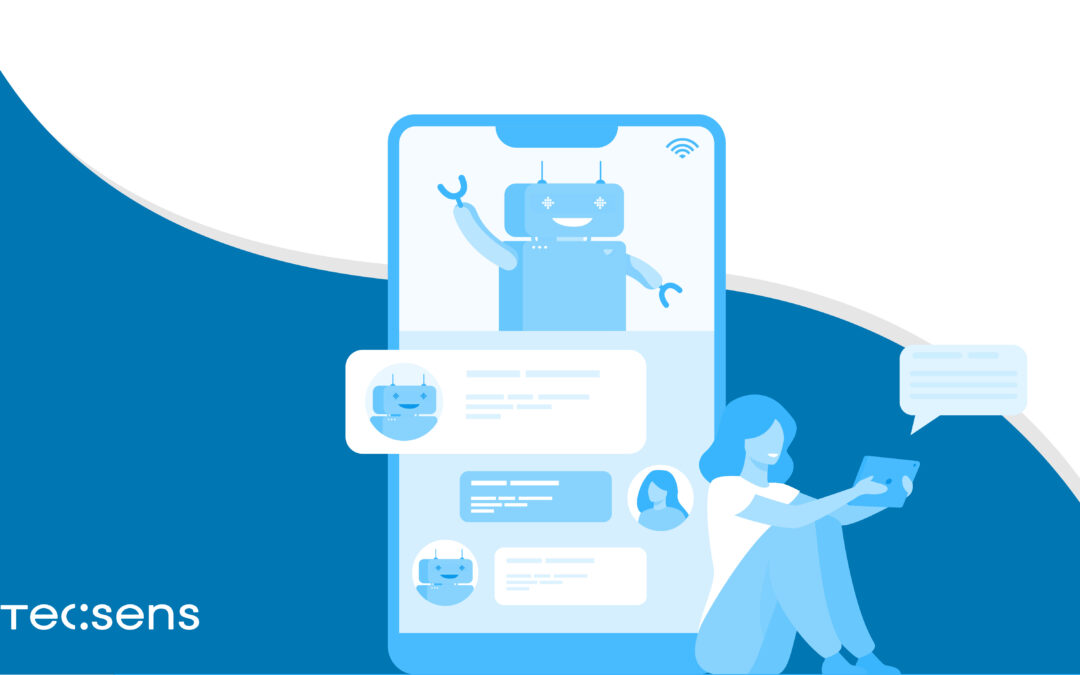Customer interaction has changed dramatically. Companies have gone from offering support only through calls or emails, to adopting more efficient and scalable solutions such as chatbots. These bots, based on artificial intelligence (AI), can not only handle thousands of queries at the same time, but are also improving their ability to offer a more personalized and, most importantly, human treatment. But how do chatbots manage to make interactions closer and more empathetic? The key lies in the tools and strategies they use to simulate human interaction, understanding the needs and expectations of users. We tell you all about Chatbots: Humanized Customer Service.
Chatbots: Humanized customer service, 5 fundamental points.
1. Natural Language Processing (NLP)
One of the main technologies that allows chatbots to offer more natural and accurate responses is Natural Language Processing (NLP). This branch of AI is responsible for bots understanding not only the words, but also the context and intent behind users’ questions. Thanks to NLP, bots can detect emotions, identify recurring problems, and even adjust their tone of communication, making it more formal or casual, as the situation requires.
For example, if a customer is frustrated that a product hasn’t arrived on time, the chatbot can interpret the tone of dissatisfaction and offer an apology and quick fixes instead of a generic response.
2. Use of Customer Information
Chatbots are also becoming more personalized thanks to their ability to access specific customer data. By connecting with CRM (Customer Relationship Management) databases, bots can obtain relevant information, such as purchase history, previous queries, or customer preferences. This allows them to tailor their answers and recommendations uniquely for each user.
Imagine that a customer contacts customer service to ask about the status of their order. A chatbot with access to the CRM can respond accurately, mentioning details such as the tracking number and estimated delivery date, which offers a much more efficient and satisfactory experience for the customer.
3. Machine learning
Machine learning is another key tool in the evolution of chatbots. Through this technology, bots can “learn” from each interaction and improve over time. This means that, with each conversation, the chatbot becomes more adept at understanding common questions, complex requests, and even predicting what the customer might need.
This proactive approach makes the interaction feel less robotic and more like it would be with a human agent, reducing problem-solving time and increasing customer satisfaction.
4. Conversational tone and style
Another important aspect of making chatbots feel more human is their ability to adapt the tone and style of conversation. Businesses can now program their bots to align with their brand identity while also adjusting the tone depending on the context. A chatbot can be warm and friendly in conversations with frequent users, while it can be more formal and direct in emergency situations or critical issues.
5. Human-chatbot hybrids
Finally, a very effective strategy to humanize customer service with chatbots is the hybrid approach. This consists of integrating interaction with bots and human agents. When the chatbot detects a more complex or emotionally sensitive situation, it transfers the conversation to a human agent. This ensures that even though most interactions are automated, there is always a human backup when needed.
Chatbots are revolutionizing customer service, not only because of their efficiency and speed, but because, thanks to technology, they are beginning to offer a more human and personalized experience. With tools such as Natural Language Processing, the use of CRM, machine learning and an adapted conversational style, companies can offer close and effective service, improving customer satisfaction and optimizing their internal processes.




